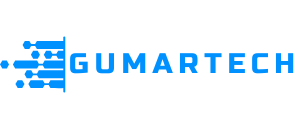Unlocking the Benefits of Email Automation for Marketers
The benefits of email automation for marketers are vast and varied, making it an indispensable tool in modern marketing strategies. As businesses strive to connect with their audiences more effectively, email automation has emerged as a game-changer, offering solutions that not only enhance efficiency but also improve customer engagement and drive conversions. In this blog post, we will explore the intricacies of email automation, its key components, and the numerous advantages it brings to marketers today.
Email Automation Explained
Email automation is the process of using software tools to send emails automatically based on predefined triggers or schedules. It allows marketers to streamline their email campaigns while ensuring timely and relevant communication with their audience. Understanding email automation entails delving into its definition, how it works, and identifying the essential components that contribute to its effectiveness.
Definition of Email Automation

At its core, email automation refers to the ability to create, schedule, and send email messages automatically without requiring direct involvement from marketers at every stage. This automation helps ensure that customers receive the right message at the right time – whether it’s a welcome email after sign-up, a birthday greeting, or a reminder about an abandoned cart.
Email automation is not merely about sending emails; it’s about creating a seamless experience for both the marketer and the recipient. By utilizing automation tools, marketers can design sophisticated workflows that trigger specific actions based on user behavior, preferences, and interactions.
In essence, email automation simplifies the communication process by reducing the manual effort involved in sending out mass emails, while simultaneously enhancing the effectiveness of those communications.
How Email Automation Works

Understanding how email automation works involves grasping the mechanics behind automated email systems. Typically, these systems operate through a combination of email service providers (ESPs) and customer relationship management (CRM) platforms.
Marketers begin by setting up specific triggers and criteria that dictate when an email should be sent. For example, a trigger could be when a customer subscribes to a newsletter, makes a purchase, or clicks a link in a previous email. Once a trigger occurs, the email automation system sends out the appropriate email based on pre-designed templates and content.
Additionally, automation workflows can be designed to segment audiences, allowing for targeted messaging that resonates with different customer groups. As users interact with emails – such as opening messages, clicking links, or making purchases – the automation system collects data, helping marketers refine future campaigns for better performance.
Key Components of Effective Email Automation

To maximize the benefits of email automation for marketers, several key components must be integrated into their strategies. These include:
- Segmentation: Efficient email automation relies heavily on audience segmentation, which involves dividing the email list into smaller groups based on specific characteristics such as demographics, behavior, and preferences. This ensures that each segment receives tailored content that meets their needs and interests.
- Personalization: Personalization goes beyond simply addressing recipients by their first name. It involves using data insights to craft messages that resonate with individual users based on their past interactions. Automated emails can be personalized to offer product recommendations, tailored promotions, and dynamic content that adjusts according to user behavior.
- Workflow Management: Effective email automation requires robust workflow management tools that allow marketers to design complex automation pathways. This includes setting up multi-step sequences that facilitate lead nurturing, onboarding new subscribers, or sending follow-up communications after specific events.
By focusing on these components, marketers can ensure that their email automation efforts yield substantial benefits, improving overall effectiveness and delivering meaningful results.
Improved Efficiency and Productivity
One of the primary advantages of email automation is its ability to significantly improve efficiency and productivity within marketing teams. By automating repetitive tasks, marketers can focus more on strategic initiatives that drive growth and engagement.
Streamlining Repetitive Tasks

Repetitive tasks, such as sending welcome emails, follow-ups, and promotional campaigns, can consume a significant amount of time and resources. With email automation, these tasks can be streamlined and executed with minimal human intervention.
Once the initial setup is complete, automated emails can be sent to thousands of recipients simultaneously based on predetermined triggers. This eliminates the need for manual sending and reduces the potential for errors. For instance, a marketer no longer needs to remember to send a birthday email to each subscriber manually; the automation system takes care of it seamlessly.
Furthermore, automation allows for continuous engagement with customers without the constant oversight of marketing staff. This means marketers can free up valuable time that can be redirected toward creative brainstorming, strategy development, and campaign analysis, ultimately boosting productivity and output.
Reducing Time Spent on Manual Processes

Manual processes are often labor-intensive, and they can slow down marketing operations. By leveraging email automation, marketers can drastically reduce the time spent on tasks like crafting individual emails or managing mailing lists.
For example, when a new subscriber joins an email list, automated processes can trigger a series of welcome emails that introduce them to the brand, highlight popular products, and encourage engagement. This not only saves time but also ensures that new subscribers receive timely and consistent communication from the outset.
Moreover, automation tools can manage subscriber preferences and ensure that recipients receive the most relevant content. This level of organization streamlines workflows and enhances operational efficiency, allowing marketers to focus on analyzing email performance rather than getting lost in manual processes.
Allowing Focus on Strategic Initiatives
As automation handles routine tasks, marketers gain the opportunity to shift their focus toward strategic initiatives. This includes developing long-term marketing goals, enhancing brand positioning, and exploring innovative campaigns to engage customers.
By having more time to strategize, marketers can analyze performance data to identify patterns and trends. They can experiment with new tactics, collaborate with other departments, and invest energy into refining their overall marketing strategy.
This shift in focus allows organizations to stay competitive in a rapidly changing environment, where agility and adaptability are paramount. In essence, email automation empowers marketers to work smarter, not harder, providing them with the freedom to innovate and push boundaries.
Enhanced Customer Engagement

Effective email automation plays a crucial role in fostering enhanced customer engagement. By personalizing communication and ensuring timely interactions, marketers can create meaningful relationships with their target audiences.
Personalization at Scale
Personalization is pivotal to effective email marketing. Traditionally, marketers might have struggled to send tailored messages to individuals due to resource constraints. However, email automation enables personalization at scale, allowing brands to cater to the unique preferences of each subscriber.
Through automation, marketers can segment their audience and leverage behavioral data to craft personalized messages. For instance, if a customer frequently purchases fitness-related products, an automated system can send tailored recommendations based on their past purchases, along with exclusive offers to entice them further.
This kind of targeted communication not only improves engagement rates but also enhances the overall customer experience. Recipients feel valued and understood, leading to increased loyalty and trust in the brand.
Timely Communication with Targeted Audiences
In the digital age, consumers expect instant gratification and timely communication. Email automation ensures that messages reach recipients promptly, aligning with their behaviors and preferences.
For example, if a customer abandons their shopping cart, an automated follow-up email can be triggered shortly thereafter to remind them of their items and perhaps even include a discount code to incentivize completion of the purchase. This type of timely communication increases the likelihood of conversion.
Moreover, marketers can optimize send times based on historical open rates, ensuring that emails land in inboxes when recipients are most likely to engage. By consistently delivering relevant content at the right time, brands can nurture relationships and keep their audience engaged over the long term.

Building Stronger Customer Relationships
Automated email campaigns help build stronger customer relationships by maintaining consistent communication and providing value throughout the customer journey. From welcome emails to re-engagement campaigns, every touchpoint serves as an opportunity to connect with customers.
For instance, automated surveys can be sent after a purchase to gather feedback about the customer’s experience. This not only shows that the brand cares about customer input but also provides invaluable insights that can be used to enhance products and services.
Additionally, loyalty programs can be managed through email automation, rewarding repeat customers and encouraging them to continue engaging with the brand. By fostering a sense of community and appreciation, brands can turn customers into advocates who promote the business through word-of-mouth and social sharing.
Increased Conversion Rates

Enhancing conversion rates is one of the primary goals of any marketing strategy, and email automation proves to be a powerful ally in achieving this outcome. By implementing automated lead nurturing and optimized follow-up sequences, marketers can drive higher conversion rates and ultimately increase revenue.
GoHighLevel is a comprehensive marketing platform that integrates various tools to simplify and enhance the effectiveness of email automation. By providing advanced features such as automated workflows, detailed analytics, and seamless campaign management, GoHighLevel empowers marketers to efficiently execute and optimize their email marketing strategies. With its user-friendly interface and robust capabilities, GoHighLevel is ideal for businesses seeking to streamline processes, improve engagement, and achieve better results in their email marketing campaigns.
Automated Lead Nurturing Strategies
Lead nurturing is the process of developing relationships with potential customers, guiding them through the sales funnel until they are ready to make a purchase. Email automation facilitates this process by allowing marketers to tailor their communication based on lead behavior and engagement.
For example, when a lead downloads a whitepaper or signs up for a webinar, an automated email series can be triggered, providing them with additional resources and insights related to the topic. By delivering relevant content over time, marketers can position themselves as trusted advisors, increasing the likelihood that leads will convert into paying customers.
Moreover, automation allows marketers to score leads based on engagement levels, enabling them to prioritize follow-up efforts. Leads that exhibit strong interest can be targeted with personalized offers, while those who are less engaged can receive nurturing content designed to rekindle their interest.
Optimizing Follow-Up Sequences
Follow-up emails are crucial for converting leads into customers. With email automation, marketers can optimize follow-up sequences to ensure that potential buyers receive timely reminders and relevant information that nudges them closer to making a decision.
Automated follow-up sequences can be designed to address common objections, provide additional proof points, or share testimonials from satisfied customers. This targeted approach helps alleviate doubts and encourages leads to take action.
Additionally, using A/B testing to refine subject lines, content, and timing can significantly enhance the effectiveness of follow-up emails. Marketers can determine what resonates best with their audience and adjust their approach accordingly, resulting in improved conversion rates.
Utilizing A/B Testing for Improved Campaigns
A/B testing is a valuable technique employed in email marketing to compare different variations of an email campaign. Email automation allows marketers to easily implement A/B tests for various elements, including subject lines, images, call-to-action buttons, and email layouts.
By measuring the performance of different email versions, marketers can gain insights into what captures their audience’s attention and drives engagement. This data-driven approach informs future campaigns, allowing marketers to continuously improve their strategies based on real-time feedback.
Over time, A/B testing leads to more effective email marketing campaigns, which translates to higher open rates, click-through rates, and ultimately, increased conversions.
Data-Driven Insights and Analytics

Data-driven marketing is the cornerstone of successful campaigns, and email automation provides marketers with critical insights and analytics that inform decision-making. By harnessing the power of data, marketers can refine their strategies, respond to consumer behavior, and optimize email performance.
Tracking Email Performance Metrics
Monitoring performance metrics is essential for evaluating the success of email campaigns. Email automation tools offer comprehensive dashboards that provide real-time analytics on key metrics, such as open rates, click-through rates, conversion rates, and unsubscribe rates.
While open rates give insight into subject line effectiveness and sender reputation, click-through rates indicate how well the email content resonates with recipients. The conversion rate reveals the ultimate impact of the campaign on sales and revenue.
By being able to track these metrics cohesively, marketers can quickly identify areas for improvement and adjust their strategies as needed. This proactive approach ensures that campaigns remain relevant and impactful.

Gaining Insights into Consumer Behavior
Consumer behavior insights are invaluable for tailoring marketing efforts. Email automation allows marketers to collect detailed data on how recipients interact with their emails, including which links they click, how long they spend reading emails, and whether they complete desired actions.
This information helps marketers understand their audience better and recognize patterns in behavior. For instance, if a particular segment consistently engages with promotional emails around certain holidays, marketers can develop targeted campaigns that capitalize on these trends.
By gaining a deeper understanding of consumer behavior, marketers can personalize their messaging and deliver content that aligns with the interests and preferences of their audience, enhancing engagement and driving conversions.
Refining Marketing Strategies Based on Data
With access to rich data insights, marketers can continuously refine their email marketing strategies. Analyzing performance metrics and consumer behavior allows them to make informed decisions about their campaigns, ensuring that they remain aligned with audience expectations.
For example, if analysis reveals that emails sent at a specific time generate higher engagement, marketers can adjust their scheduling practices to align with this trend. Similarly, if certain types of content perform exceptionally well, marketers can leverage that knowledge to create similar materials for future campaigns.
Data-driven refinement fosters a culture of continuous improvement, ensuring that marketing strategies evolve alongside changing consumer preferences and market dynamics.
Summary
In summary, the benefits of email automation for marketers are undeniable. From improved efficiency and productivity to enhanced customer engagement, increased conversion rates, and valuable data-driven insights, email automation has become an essential component of successful marketing strategies.
By streamlining repetitive tasks, personalizing communication, and utilizing analytics, marketers can create impactful campaigns that resonate with their audiences and drive measurable results. As technology continues to advance, the importance of embracing email automation will only grow, solidifying its role as a cornerstone of modern marketing practices.

Investing in email automation is not just about keeping up with trends; it’s about unlocking the immense potential of effective communication and building lasting relationships with customers. Embrace the future of marketing by harnessing the power of email automation for your brand today.




